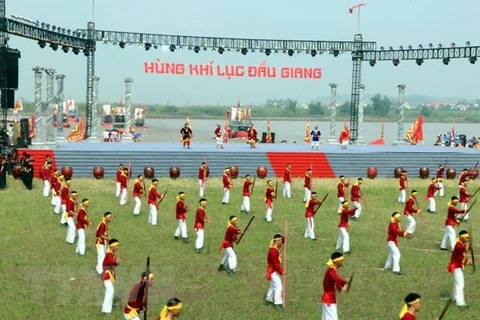Hanoi (VNA) – The northern province of Hai Duong has made drastic efforts to accelerate international integration in recent years.
From 2014 – 2018, the Red River Delta province attracted 180 foreign direct investment (FDI) projects, worth a total of more than 1.3 billion USD.
Most of the province’s districts have at least an industrial park or cluster that gathers a large number of manufacturers. A majority of FDI firms are located in Hai Duong city, Chi Linh and Kinh Mon districts. The province has also restored and maintained operation of 35 craft villages to create jobs for the locals.
Hai Duong has posted annual export growth over the last six years. From 2013 – 2018, the province’s export revenue totalled 28.3 billion USD, representing an average growth of 15.3 percent annually, while imports grew at an average pace of 16.5 percent per year to total 25.6 billion USD.
Statistics from the Ministry of Planning and Investment’s Foreign Investment Agency show that the province lured 450 million USD in FDI in the first half of this year, ranking 10th among the 46 localities that received FDI in the period.
Of the total, 326 million USD came from 38 newly licensed projects while the remainder was added to 14 projects already in operation.
As of June this year, Hai Duong was home to 438 foreign-invested projects with capital totalling more than 8.15 billion USD, retaining its position as one of the top ten localities in the country in terms of attracting foreign capital.
Since 2013, Hai Duong has hosted 12 dialogues between the provincial government and enterprises, particularly startup businesses, to learn about and help them tackle difficulties. The province has also organised 109 trade fairs and exhibitions both at home and overseas to promote its products and services.
It has focused more on applying advanced techniques and technology as well as new varieties, innovative practices and preservation methods in agriculture. A number of its agricultural products have reached international standards and been permitted to export to strict markets like the United States and Japan.
However, several challenges remain in multiple areas, hindering the province’s international integration efforts. Infrastructure development has failed to keep up with local economic growth while there has been insufficient funding for expanding hi-tech agriculture.
Plus, the province has yet to develop a college, university or an international cooperation model capable of providing skillful manpower that satisfies requirements for international integration. There has been a lack of specific and effective activities to promote export-import and trade in the agriculture sector while many local companies remain inactive in international integration./.
VNA
























